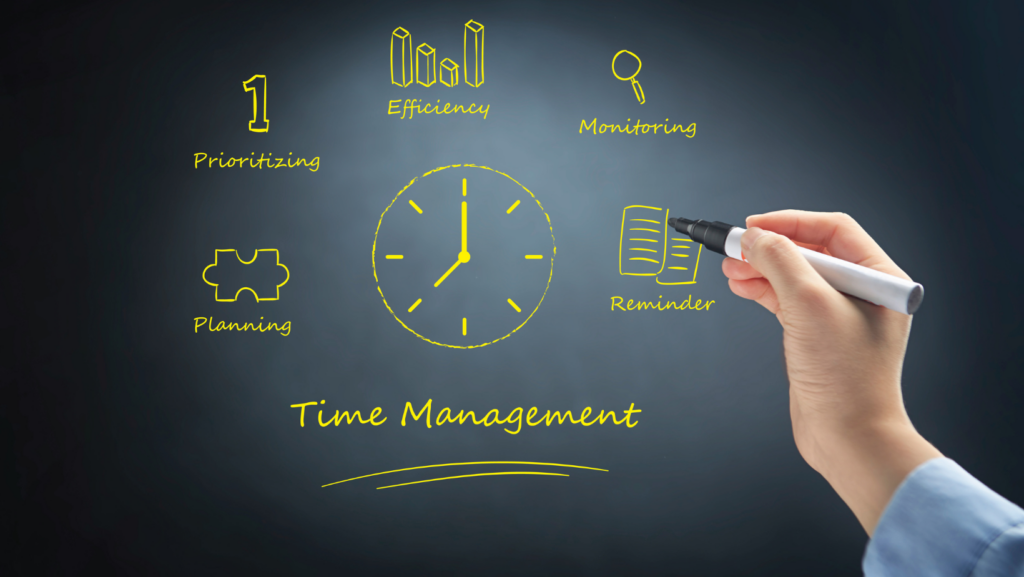In the whirlwind of today’s fast-paced world, managing time efficiently has become a high-priority quest for many. Time management systems, the unsung heroes of productivity, are stepping into the spotlight. These systems aren’t just tools to keep track of hours and minutes; they’re strategies designed to maximize productivity, reduce stress, and enhance the quality of life.
Time Management Systems
Providing a comprehensible picture of time management systems, this section details their essence and offers an overview of diverse techniques for proficient control over time. Before embarking on these aspects, let’s cement the previous outline stating that these systems elevate productivity, alleviate stress, and enhance life quality.
Key Components of Effective Time Management Systems
Setting Clear Goals
Establishing definite, measurable, attainable, relevant, and time-bound (SMART) goals forms the cornerstone of any potent time management system. These SMART goals offer a clear path, diminish ambiguity, and increase focus. Instead of vague desires like “I want to be better,” SMART goals offer distinct targets as “I want to improve my typing speed to 60 words per minute by the end of the month.”
Prioritizing Tasks
 Another central component that bolsters time management systems is task prioritization. A myriad of tasks might spur daily, but prioritizing them as per urgency and importance enables productive time use. This is where techniques like the Eisenhower Matrix play an important role. With four quadrants categorizing tasks as urgent and important, urgent but not important, important but not urgent, and not urgent or important, individuals can easily classify their tasks.
Another central component that bolsters time management systems is task prioritization. A myriad of tasks might spur daily, but prioritizing them as per urgency and importance enables productive time use. This is where techniques like the Eisenhower Matrix play an important role. With four quadrants categorizing tasks as urgent and important, urgent but not important, important but not urgent, and not urgent or important, individuals can easily classify their tasks.
Time blocking techniques indeed hold pivotal roles within efficient time management systems. Rather than alternating between tasks throughout the day, this technique suggests allocating specific time slots for different activities. This method, often called Time Boxing or Time Blocking, enhances concentration and diminishes the toll transition takes when switching between tasks.
Popular Time Management Systems Studied
The Pomodoro Technique
Developed by Francesco Cirillo in the late 1980s, the Pomodoro Technique employs a timer to break work into intervals, traditionally 25 minutes in length, separated by short breaks. This method aims to improve productivity and focus. A Pomodoro count resets if the task is interrupted, underscoring the importance of uninterrupted work.
The Eisenhower Matrix
The Eisenhower Matrix, named after President Dwight D. Eisenhower, utilizes a 2×2 box to distinguish tasks based on urgency and importance. Tasks are classified into four categories: do first, schedule, delegate, and don’t do. This quadrant system contributes to improved productivity by clarifying tasks that need immediate attention versus those that can wait.
Implementing Time Management Systems in Daily Life
Overcoming Common Challenges
 Transitioning to structured time management systems often presents hurdles. Common challenges include resistance to change, procrastination, and lack of prioritization.
Transitioning to structured time management systems often presents hurdles. Common challenges include resistance to change, procrastination, and lack of prioritization.
- Resistance to Change: Implementing new habits, despite benefits, often encounters resistance. Develop an understanding of the desired system, then gradually implement it. For instance, try the Pomodoro technique for a couple of tasks initially, allowing adaptation to the system’s pace.
- Procrastination: Time management systems, like Time Blocking, counter procrastination by assigning specific times for tasks. Procrastination subsides as tasks turn into scheduled responsibilities.
- Lack of Prioritization: An Eisenhower Matrix assists in prioritizing tasks. Using it, tasks get classified into four categories – crucial and immediate, important but not urgent, urgent but not essential, and neither urgent nor vital. Consequently, prioritization becomes part of the routine.
Tools and Apps to Enhance Productivity
 Several digital tools and apps help implement and maintain time management systems effectively. Here are three examples:
Several digital tools and apps help implement and maintain time management systems effectively. Here are three examples:
- Forest: This app aims at curbing distractions. Users plant a virtual tree which grows only while the user is working, ensuring consistent focus.
- Trello: A task management tool excelling in visual cues, Trello allows users to create task boards, making it an ideal fit for the Eisenhower Matrix method.
- Google Calendar: Google Calendar serves as an excellent tool for Time Blocking. One can schedule tasks into the calendar, incorporating alerts to maintain discipline. The seamless integration across devices ensures access at all times.
Need to Know
Time management systems are crucial tools for enhancing productivity and reducing stress. They’re not one-size-fits-all solutions; it’s essential to tailor them to individual needs and set SMART goals. Tools like Forest, Trello, and Google Calendar can help track progress and measure success. However, it’s not just about implementation, but consistent usage and continuous adaptation.



